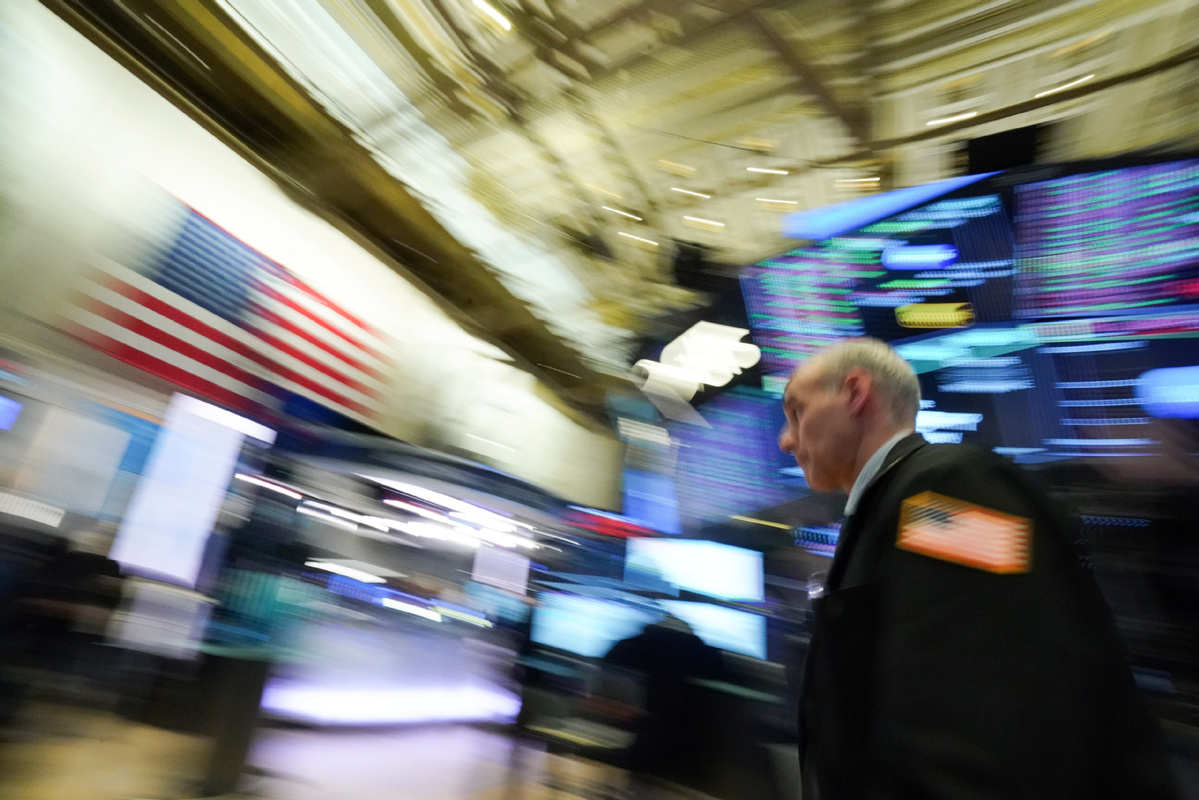Dow loses more than 2,000 points


The Dow Jones Industrial Average plunged more than 2,000 points Monday for the first time amid fears that the worldwide spread of the coronavirus would disrupt supply chains, slow production and lead to a recession.
The blue-chip index took another hit when the price of crude oil plummeted, further underscoring doubts about future economic activity.
The market clawed back some early losses after a sharp plunge in the opening minutes of trading triggered an automatic 15-minute halt to trading, but fell at the close in the worst day of trading since 2008.
Selling hit most market sectors and drove investors to government bonds, sending the yield on the 10-year Treasury note below 0.5 percent, an unprecedented low. Gold fell slightly after briefly hitting the $1,700 mark.
The Dow lost 2,013.76 points, or 7.79 percent, and closed at 23,851.02 The S&P 500 fell 7 percent shortly after the opening bell, forcing a temporary halt to trading. The index lost 225.81 points, or 7.60 percent, and closed at 2,74656. The Nasdaq Composite fell 624.94 points, or 7.29 percent, and closed at 7,950.68.
Markets tumbled worldwide. London's FTSE lost 7.69 percent. Japan's Nikkei fell 5.07 percent. Hong Kong's Hang Seng lost 4.2 percent. The Shanghai Composite shed 3 percent.
The US economy remains strong as evidenced by last week's solid jobs report and robust consumer spending, but President Donald Trump said he would meet with congressional leaders Tuesday to discuss possible action to stimulate the economy, including a payroll-tax cut and paid sick leave for quarantined workers.
"We're also going to be talking about hourly wage-earners getting help so that they can be in a position where they're not going to ever miss a paycheck," Trump said Monday.

Worldwide, Johns Hopkins University said there were 113,432 confirmed coronavirus cases, including 3,994 deaths.
In the US, the Centers for Disease Control and Prevention (CDC) reported more than 500 cases of coronavirus disease, also called COVID-19, including more than 20 deaths.
China said the number of new cases has dropped sharply, and production is resuming in some locations.
In a research report, investment bank Goldman Sachs wrote: "Our baseline assumption is the Covid-19 virus becomes widespread but is relatively short-lived. We forecast flat earnings in 2020 followed by 6 percent growth in 2021. However, the US economy could slip into a recession if the coronavirus contagion lasts for an extended period of time."
Crude oil futures fell 10.34 percent to $30.92 a barrel.
Trump tweeted: "Good for the consumer, gasoline prices coming down! Saudi Arabia and Russia are arguing over the price and flow of oil. That, and the Fake News, is the reason for the market drop!"
A price war between Saudi Arabia and Russia drove crude oil prices to their lowest level since the 1991 Gulf War as the two oil-producing nations seek to grab market share during the downturn, creating the risk of a global glut. Lower prices could make it difficult for the US shale industry to turn a profit.
"This completely changes the outlook for the oil and gas markets," said Goldman Sachs in the report. "(It) brings back the playbook of the New Oil Order, with low cost producers increasing supply from their spare capacity to force higher cost producers to reduce output."
"In fact, the prognosis for the oil market is even more dire than in November 2014, when such a price war last started, as it comes to a head with the significant collapse in oil demand due to the coronavirus," the report said.
Major oil stocks closed lower. Chevron lost 15.37 percent. Exxon-Mobil fell 12.22 percent. Conoco Phillips slid 24.84. Marathon Oil lost 46.85 percent. Occidental slid 52.01 percent.
Copper, also considered an indicator of future economic activity because it is used widely in construction and has many electrical applications, fell 2.62 percent.
Airline stocks were again hammered as companies and individuals cut back on travel to limit possible exposure to the coronavirus and to reduce the risk of spreading it. United Airlines fell 10.21 percent. American Airlines lost 7.64 percent. Delta slid 5.16 percent. Southwest lost 4.61 percent.
Campbell Soup has reported strong earnings, and some investors see the company as a coronavirus play as people stockpile food and supplies for a possible government-mandated shutdown of cities. Nevertheless, Campbell's stock closed down 3.01 percent.
Gilead Sciences rose in early trading because one of its drugs may be effective in treating the coronavirus, but the stock lost 8.35 percent for the day.
The Federal Reserve cut interest rates by half a point March 3 — the largest cut since the 2008 financial crisis — to help calm financial markets and stabilize the economy. But the market continued to fall. Many analysts therefore expect a second rate cut when the Fed meets March 17-18. The current rate range is 1.00 to 1.25 percent and could be slashed as much as a half to a full point.
"Fed monetary policy has largely become irrelevant as demand contracts at multiple levels linked to the twin shocks from supply-chain disruption and now the plunge in oil prices," Manish Shah, chief investment officer at Toolbooth Strategy, told China Daily. "Consumers will enjoy lower prices for a while, until the shale gas producers start going out of business and then the banks in Texas feel the pain."
However, lower interest rates will reduce the cost of investment and consumer debt. But the cut — and the prospect of another cut when the Fed next meets — took a bite out of bank stocks because lower rates will erode interest income on loans. Citi slid 16.17 percent. Bank of America lost 14.07 percent. JP Morgan Chase fell 13.55 percent. Wells Fargo lost 12.43 percent.
The temporary halt to trading underscored the market's volatility.
All stock trading was halted for 15 minutes shortly after the opening bell Monday when the S&P 500 dropped 7 percent from its previous close — the first time trading was halted since the "flash crash" of 2010.
A decade ago, computerized, high-frequency trading led to large volumes of shares being sold to avoid further losses, triggering a downward spiral, and the Dow fell nearly 1,000 points. At the time, the circuit breakers were linked only to the Dow.
"We are still in the early phase of a selloff linked to the coronavirus pandemic," Shah said. "The selloff is expected to continue, but will now broaden from airlines and hotels to energy and then to regional banks. The high-yield bond market will face another tailspin. The S&P 500 index is down about 14 percent, but an extended selloff may take the index lower, beyond 20 percent to 25 percent."



































